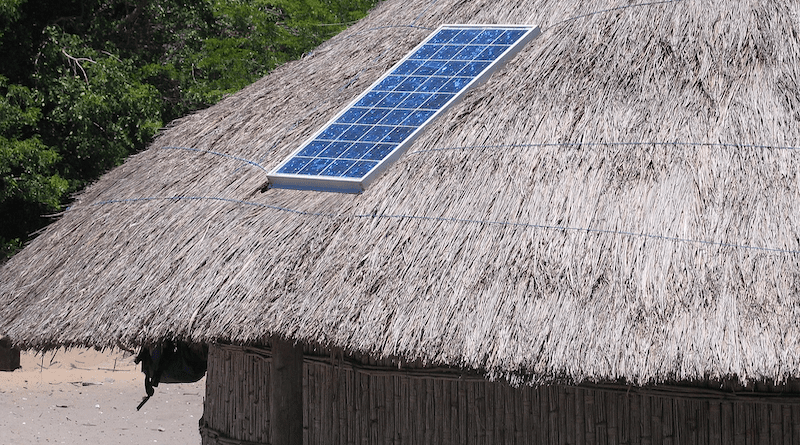Decentralization: The Future Of Clean Energy – OpEd
Today is the first-ever International Day of Clean Energy. This important day – January 26th, 2024 – ordained by the United Nations General Assembly (UNGA), is intended to encourage the transition to clean energy and ultimately inspire a transformation of the world as we know it. However, as we mark this milestone on the calendar, it is clear that the world is failing at this task. The global community remains mired in “unclean” energy, which creates emissions that warm the Earth. Because of the complacency surrounding this issue, the world has fallen behind in the UN’s Sustainable Development Goal 7 (SDG7): affordable and clean energy for all by 2030. While the global community is lagging in its efforts, there is still hope. By implementing decentralized energy infrastructure, such as solar and wind systems, the possibility of achieving SDG7 by 2030 still exists.
Decentralized energy, also known as an autonomous energy grid (AEG), generates energy near the point of consumption and eliminates the energy lost in transport. However, with centralized energy, energy use can take place up to 300 miles (480 km) from production, squandering up to five percent of produced energy. From the late 1800s – beginning with Nikola Tesla’s implementation of the alternating current – to the 2000s, centralized energy was the most efficient and cost-effective energy production to serve as many people as possible. This efficiency came from the idea that “bigger is better”, so having one large plant or station for a large geographic area made it easy to maintain and monitor. However, as populations grew and spread out geographically, efficiency decreased. Energy that is produced but not consumed emits carbon. Technology in the late 1800s was limited, making decentralized energy unobtainable. However, decentralized energy has become an efficient and attainable alternative. In our world today, bigger is not always better.
So, how does decentralized energy production help reach the UN’s clean energy goals? Clean energy technology is suitable for small-scale implementation. By implementing clean energy like solar and wind turbines on a decentralized basis, efficiency will be close to one hundred percent with zero emissions. The energy lost in distribution is eliminated.
Many countries in the Global North will vehemently oppose the transition from centralized energy because of their deeply ingrained, well-established systems, which would have an enormous cost and effort to uproot. Inversely, the Global South, which has less developed energy systems, is positioned well to transition to decentralized systems to satisfy the energy needs of all citizens, especially rural ones who are not connected to the grid. Ultimately, to be successful, governments cannot be solely responsible, particularly in the Global South. Private organizations and NGOs can play a vital role by prompting and creating trusting relationships by demonstrating successful decentralized clean energy systems.
In Morocco, the High Atlas Foundation (HAF), in conjunction with Germanwatch, successfully implemented a decentralized energy system of solar panels in the province of Youssoufia, specifically El Kdirat village in the rural Jnane Bouih commune. The residents reached out to HAF because they saw that their village and land held the potential to flourish. However, they faced socio-economic challenges as a rural and low-income community. Coming together, the community followed HAF’s Imagine Program to determine their highest priority needs. The El Kdirat village determined that a decentralized system would be the most useful in powering irrigation for a tree nursery and providing running water in their school for drinking and bathrooms. The residents followed HAF’s directive of adopting a participatory labor model, where the residents successfully constructed the solar system that fed energy into a pump system connected to the tree nursery and pipes in the school to the irrigation system. This decentralized solar system has given the El Kdirat village true sustainability that has bolstered the community and improved the village’s economy.
As a whole, Africa has the potential to change the climate surrounding decentralized energy while helping all rural Africans with energy-related insecurities. Rural Africans comprise 60-80 percent of the African population; by turning to decentralized clean energy, African countries can become global leaders in clean energy. According to Statista and the World Bank, Africa has the world’s highest solar potential, making this leadership possible. While Africa is spearheading this new economic energy model, the Global North must commit to transitioning away from the centralized systems they have relied on for decades to reach the attainable goal of affordable and clean energy for all.

